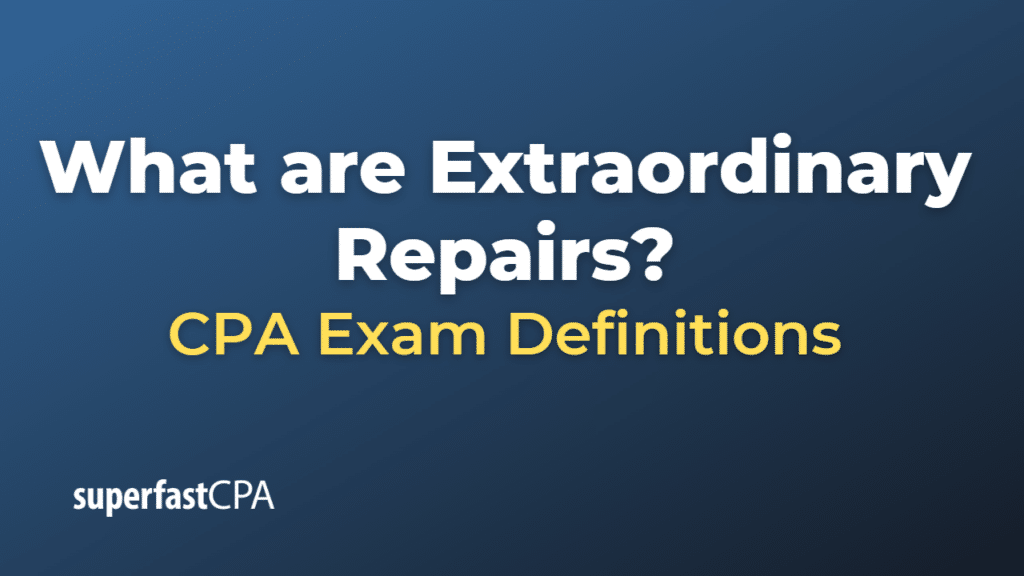Extraordinary Repairs
In accounting, “extraordinary repairs” refer to extensive repairs or improvements made to a company’s long-term assets or fixed assets (like property, plant, and equipment) that extend the asset’s useful life, increase its productivity, or enhance its capacity or efficiency.
These are not ordinary repairs and maintenance that are necessary to keep an asset operating day to day but rather significant expenditures that provide benefits extending beyond the current accounting period.
Instead of being expensed as a regular repair and maintenance expense, which would immediately affect the company’s net income, extraordinary repairs are capitalized. This means that the cost of these repairs is added to the asset’s carrying amount on the balance sheet and then depreciated over the remaining useful life of the asset. This spreads out the cost of the repairs over the periods that are expected to benefit from them.
It’s important to differentiate between regular repairs (expenses) and extraordinary repairs (capital expenditures). Regular repair and maintenance costs do not significantly improve the asset or extend its useful life beyond the original estimate, whereas extraordinary repairs do.
Please note that accounting standards may vary by country, and some may use different terminology or criteria for classifying and accounting for these types of expenditures. Always consult with a knowledgeable accounting professional or refer to the applicable accounting standards for specific guidance.
Example of Extraordinary Repairs
Here’s a hypothetical example of an extraordinary repair:
Let’s say “TruckingPro Ltd.” is a company that operates a large fleet of trucks for commercial transportation. One of its trucks, which was initially expected to have a useful life of 10 years, is in its 5th year of operation.
However, the engine of the truck completely breaks down. Instead of just conducting minor repairs or maintenance, TruckingPro Ltd. decides to replace the entire engine. The new engine costs $20,000 and is expected to extend the truck’s useful life by an additional 5 years.
In this case, the cost of the new engine would be considered an extraordinary repair. Rather than being expensed immediately as a repair and maintenance cost , the $20,000 would be added to the carrying amount of the truck on the balance sheet. Then, this amount would be depreciated over the remaining useful life of the truck, spreading the cost over the periods that are expected to benefit from the new engine.
This is in contrast to regular repairs and maintenance, like changing the oil or replacing a tire, which would be expensed immediately because they are just keeping the truck in its normal operating condition and are not significantly extending its useful life or improving its performance.













